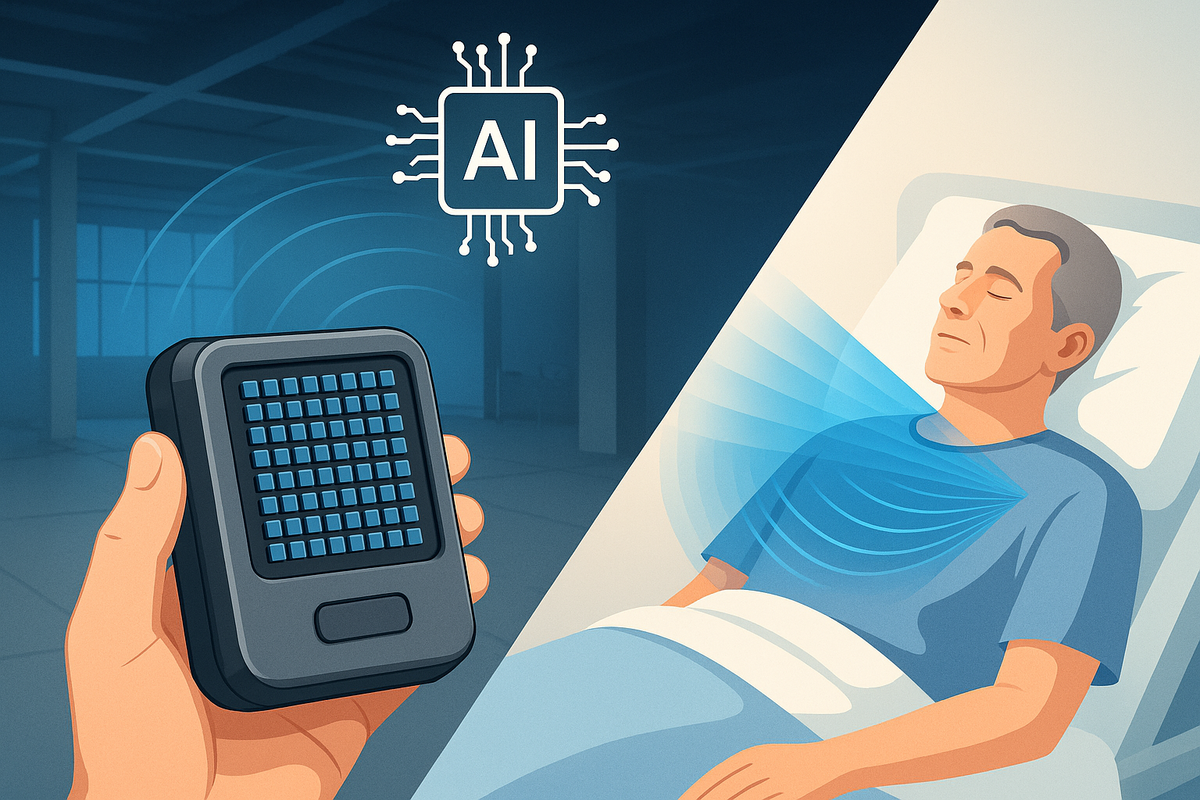
Motivation
Modern sensing technologies are increasingly required to be compact, intelligent, and versatile to meet the demands of both industrial and healthcare sectors. In particular, there is a growing need for systems that can accurately detect movement, analyze structural conditions, and monitor vital signs in a non-invasive, cost-efficient manner. Our project addresses this challenge by developing an innovative ultrasound camera platform, leveraging the latest in MEMS sensor technology and AI-driven data analysis. This powerful combination enables real-time environmental and physiological monitoring with unprecedented precision and flexibility.
Project description
This project focuses on the development of a cutting-edge ultrasound camera system that integrates miniaturized MEMS ultrasound transducers with advanced AI-based structural analysis. The core system consists of a two-dimensional array of MEMS transmitters and receivers that are sequentially activated and read using phase-controlled signal processing. Due to the compact size of the MEMS elements (less than 2 x 2 mm²), the system can be built in a highly space-efficient form.
Captured ultrasound data is processed by specialized heterogeneous computing systems optimized for AI algorithms. These include dedicated accelerators designed for dataflow-oriented neural network processing, allowing for adaptive and intelligent signal interpretation. Depending on the application, the system can operate in two configurations: high-resolution surface scanning or far-field environmental scanning using a focused ultrasonic beam.
Key application areas include:
Security: Motion detection and situational awareness in sensitive environments.
Industry: Precision surface inspection and structural monitoring.
Healthcare: Non-contact patient monitoring in clinical and eldercare settings, including nighttime movement detection and respiratory tracking.
This solution stands out for its compactness, cost-efficiency, and potential to capture vital parameters without physical contact. The ultimate goal is to bring a mobile, intelligent ultrasound camera system to market that meets the real-world needs of both safety and care environments.
Objectives
Develop a compact ultrasound camera system using MEMS-based transducers for high-resolution, non-contact sensing.
Integrate AI-powered signal analysis to enhance structural and physiological interpretation of ultrasonic data.
Enable multi-domain applications, from industrial surface inspection to patient monitoring in healthcare and eldercare settings.
Achieve real-time environmental and vital sign tracking, including motion detection and respiratory monitoring.
Validate the system in clinical environments with real-world use cases, ensuring reliability and user-oriented performance.
Challenges
Miniaturization of hardware: Designing a dense 2D array of MEMS ultrasound elements with precise alignment and signal control.
AI integration for real-time analysis: Implementing fast, reliable machine learning algorithms that operate on edge devices.
Adaptive scanning in complex environments: Creating beamforming strategies that handle both surface and far-field measurements effectively.
Robust performance across use cases: Ensuring consistent accuracy whether used in industrial conditions or sensitive healthcare settings.
Balancing cost, efficiency, and functionality: Delivering a scalable, affordable system without compromising on performance or safety.
For more details, please contact the following personnel:
